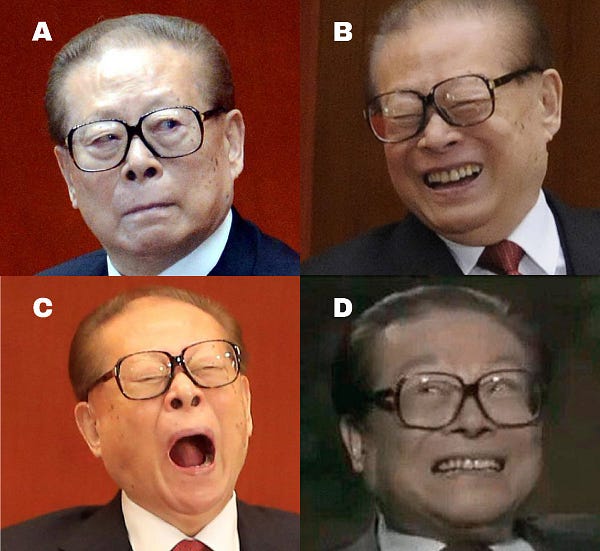Will TSMC’s American Fab Ever Get Built?
The following commentary comes from Doug Fuller, professor at City University Hong Kong. Doug was a guest of the ChinaTalk podcast, where late last year we took a deep dive into the mainland semiconductor ecosystem.
TSMC’s announcement that it plans to build an advanced fab in Arizona has been heralded as the comeback of American high-tech manufacturing. But we need to curb our enthusiasm. You don’t have to be a free-market fundamentalist allergic to anything resembling industrial policy to have legitimate questions about this deal.
At the most basic level, there’s a chance this fab never gets built. The history of the semiconductor industry is littered with announcements of “ghost fabs.”
TSMC’s obvious reason for making this announcement was to attempt to head off American export controls threatening to end TSMC’s lucrative business with Huawei. Within 24 hours, the logic behind that gambit evaporated.
First, the US government announced stricter controls that threaten to end Huawei’s business with TSMC. Then, Keith Krach, Under Secretary of State for Economic Growth, Energy, and the Environment, made it clear that the Arizona investment would not guarantee a license for TSMC to use American equipment to supply Huawei.
Reports of loopholes in the export control laws have suggested that Huawei might be able to indirectly continue its business with TSMC even beyond the temporary general license ending on August 13. Whichever way this policy ends up implemented, if there’s no legal Huawei business for TSMC, then why should TSMC cosy up to the US government by investing in a fab far from its core operations cluster in East Asia?
The timeline of fab-building and the promised process technology of the fab raise additional questions. The plan might not be ready for production until 2029. TSMC has been known to build a greenfield site to mass production in under two years so this proposed timeline is very slow. Perhaps building fabs takes longer in the west than in East Asia, but the timeline is also indicative of a fab that might be canceled with the confirmation of the cancellation strung out for a long time for political reasons. It doesn’t cost them anything to announce it. Only when a clean room is built and equipment starts moving in do you know the firm is committed to the project.

TSMC Clean Room. Aside from the substantial state subsidies TSMC is likely receiving, Arizona was also chosen likely for its scarcity of natural disasters that could threaten the fab.
More concerning is that if the fab takes many years to be built, its reported 5 nm process technology will no longer be cutting edge. Or if 5 nm is still cutting edge five or eight years from now, that means the semiconductor industry’s process technology advances by that time have ground to a halt and the industry has gone from being tech-intensive to solely capital-intensive. In that case, throwing state and federal subsidies at the fab wouldn’t be worth the cost, as semiconductors will just turn into another mature industrial sector.
Finally, if the goal is to revive cutting-edge fabrication in the US, we need to ask ourselves if TSMC is the right vehicle for the task. TSMC is still partially owned by the Taiwanese government and derives most of its human resource-based competitive capabilities from Taiwan. Both of these point to a company not quite wholly committed to develop cutting-edge capabilities deeply embedded in the US.
There’s precedence for such a lack of commitment from TSMC’s own past. Over the objections of many TSMC’s managers, Morris Chang decided to build a fab, Wafer Tech, in Oregon in order to prove that foundry could be done in the US. Over time, however, TSMC allowed Wafer Tech to fall into relative obsolescence by not investing billions to keep the capital equipment up-to-date. [Jordan: From Wafer Tech Glassdoor page: “practically no opportunities to advance within management if you’re not from Taiwan.]
This outcome is not surprising given that Taiwanese government ownership and subsidies naturally prioritize Taiwan-based advanced manufacturing. To paraphrase what T. H. Tung, the chairman of Taiwan’s large contract manufacturer, Pegatron, said to the Taiwanese media recently: don’t worry about TSMC’s investment as its new Tainan fab is more than twice the announced investment in Arizona. At the end of the day, TSMC is Taiwanese and isn’t going anywhere.
Given the subsidies from the state and federal government that have reportedly been promised to TSMC, the US needs to consider if there is an alternative company or consortium more likely to be committed to creating and sustaining skilled human resources in advanced manufacturing in the US. Encouragingly, Senators Schumer, Leahy and Reed recognize that this TSMC plan is not up to the task of building a broad-based for the revival of advanced semiconductor manufacturing in the US and on May 19 wrote a letter to Secretary of Commerce Ross to that effect.
Stay tuned next week for when Doug outlines what that consortium should look like.
China Twitter Tweets of the Week















Thread









Please consider donating to the ChinaTalk Patreon. Or hiring me, that could work too!






